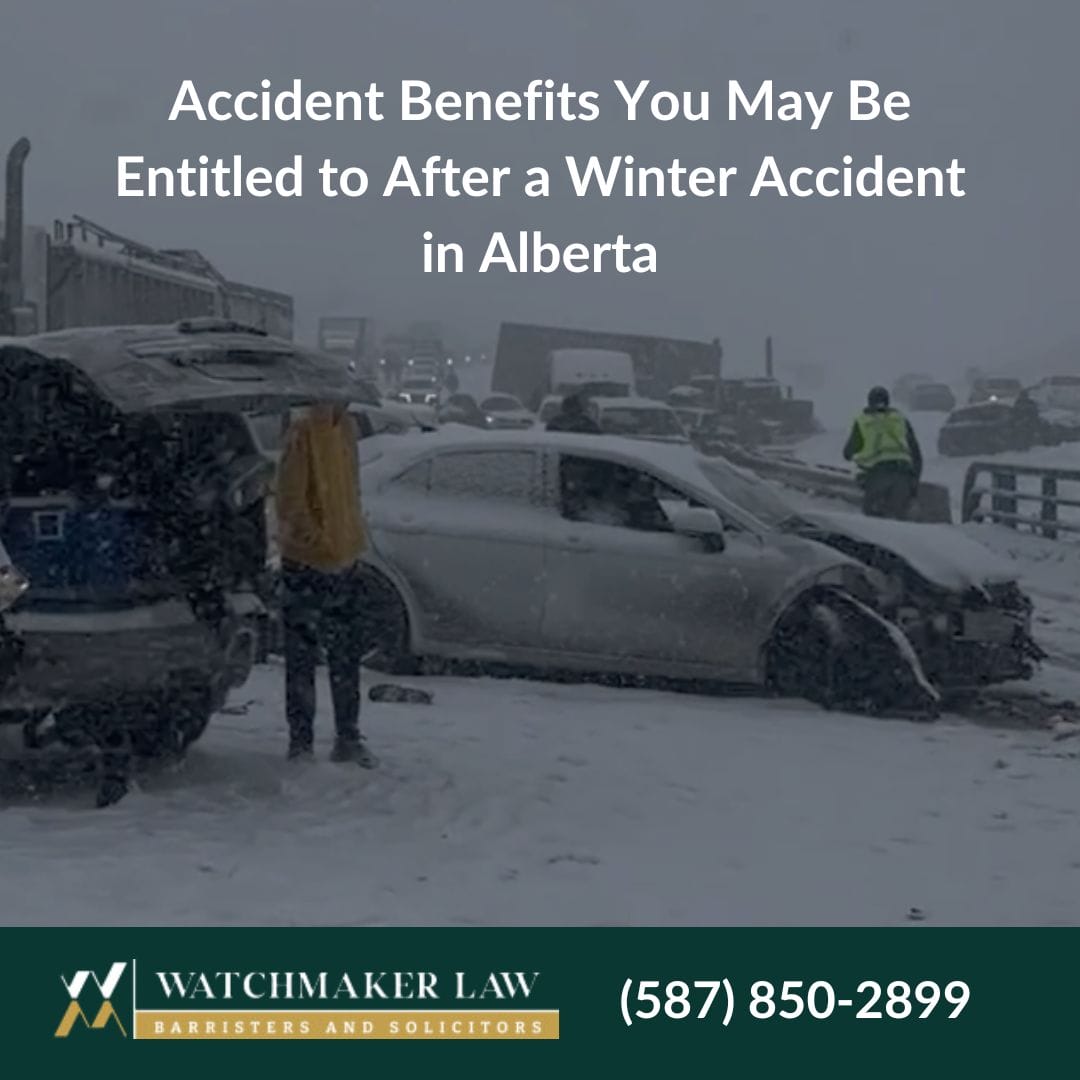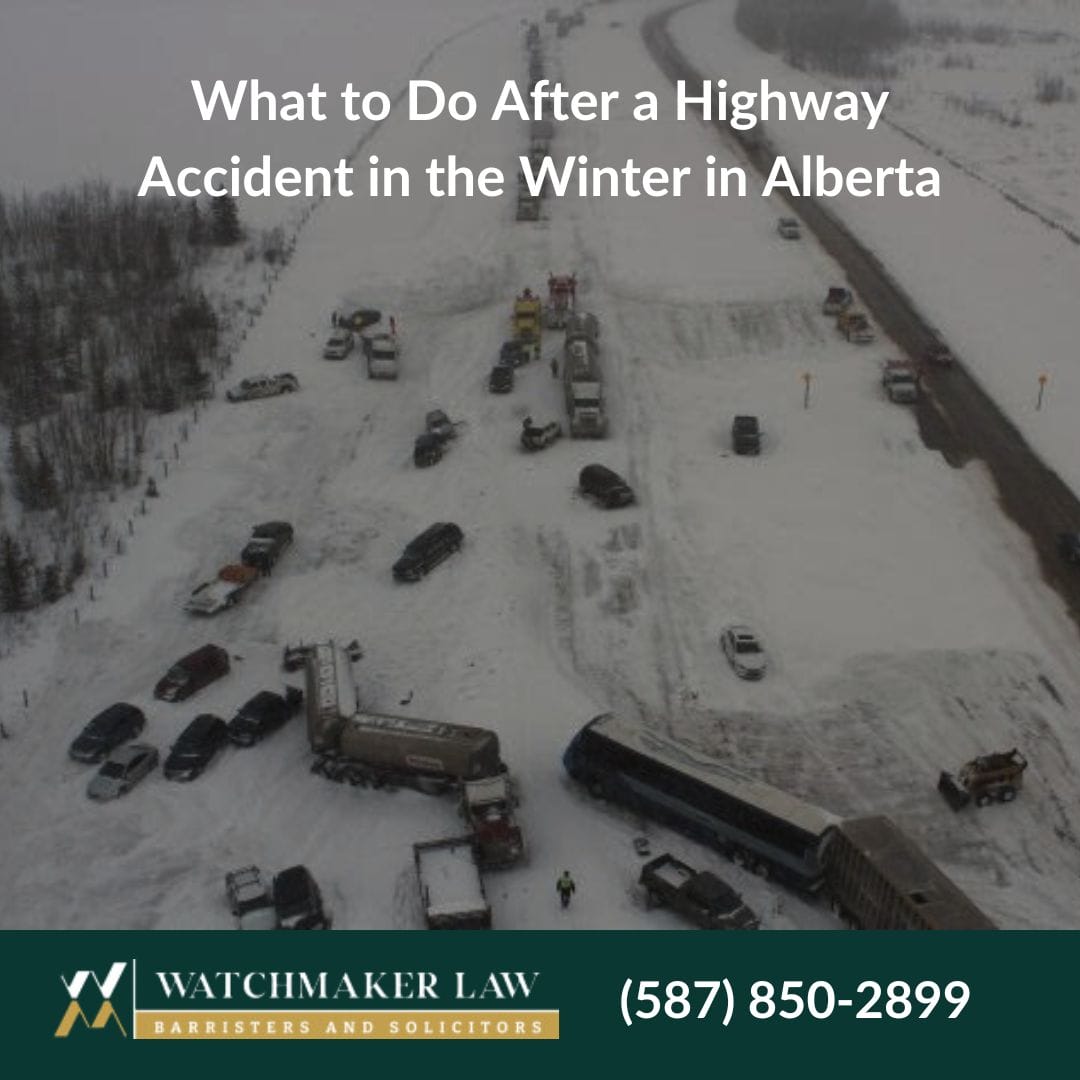The Artindale-Eeles v. Mercer case is a recent case law that presents some helpful and cautionary lessons for individuals who are presenting personal injury claims after sustaining injuries in a motor vehicle accident in Alberta. Two main issues that the court had to assess were the plaintiff’s credibility and causation of her injuries generally.
The Accidents and Injury Claims
By way of background, the claimant, Ms. Artindale-Eeles sustained two accidents, 45 minutes apart while on her way to work in the early hours of April 10, 2010. She testified at her trial that road conditions were not great: it was still dark out with icy road conditions and blowing snow. As she crested a railway overpass, driving at about 20-30 km/hour, she suddenly saw a van stopped in front of her. Despite applying her brakes, her vehicle still collided with the stationary van. The court considered this impact to be “Collision 1”. She testified that she did not sustain injuries from this accident, but property damage was noted on her vehicle.
After the first accident, she was instructed by the fire chief who was on the scene of the motor vehicle accident to stay in her vehicle and wait for the RCMP to arrive. Ms. Artindale-Eeles followed this instruction, stayed in her vehicle and turned on her four-way flashers. While Ms. Artindale-Eeles waited for the RCMP to arrive, her stationary vehicle was rear-ended by an RCMP vehicle. The court considered this impact to be the “Collision 2”. She claimed neck and shoulder injuries from Collision 2. During her hospital visit, she complained of pain to the left/mid-clavicular, right knee and chest. The attending doctor noted that she was complaining of pain to the c-spine, left spine/clavicle and right knee. The attending doctor ultimately diagnosed her with “soft-tissue injury”. She was prescribed muscle-relaxants.
After her initial doctor’s assessment and review, she started physical therapy and returned to work 4 days after the motor vehicle accidents. She continued to work full time hours until May 6th, 2010, when her employer approved a reduction to her work schedule from full time to half time, following consultations with her doctor.
Credibility in Personal Injury Claims
The court was faced with the task of assessing Ms. Artindale’s credibility and they also had to assess and decide on the issue of causation. In paragraph 34 of the decision, the court noted that the consideration the claimant’s reliability is “especially true” when the plaintiff’s complaints relate to “soft tissue injuries”. When your injuries are not objective injuries that can be seen on a diagnostic test, the court places particular emphasis on the reliability of your evidence and other corroborating evidence very seriously. Consistency is key to the evaluation of your evidence. Do not feel the need to exaggerate your symptoms or issues that you are experiencing after a motor vehicle accident in Alberta. The court assesses a claimant’s credibility by weighing the following factors:
- Firmness of memory;
- Changes between testimony in chief and cross-examination;
- Consistency with other evidence;
- Impact of self-interest of the evidence;
- The claimant’s demeanour and;
- The assessment of likelihood in all circumstances.
The above list is by no means exhaustive, the court may consider other factors that might impact their assessment of the claimant’s credibility.
Causation in Personal Injury Cases
In addition to the above issues, the court also had to grapple with causation, specifically, they wanted to know which of the client’s pre-existing issues exacerbated or contributed in one way or the other to the client’s current condition. Ms. Artindale-Eeles acknowledged during trial that before the accident in question, she suffered from headaches, depression, insomnia, diabetes and pain to the neck, chest, shoulder and back.
To further complicate the issues, Ms. Artindale was involved in a couple of slip and fall incidents that affected her recovery from her motor vehicle accident injuries. While the court generally found Ms. Artindale-Eeles to be sincere, straightforward, and hardworking, the court nonetheless expressed some concerns about the reliability of some of her communications about her symptoms to her medical providers.
Regarding causation, the court cited the “but for” test as espoused in Athey v. Leonati to buttress the point that “the plaintiff is under no obligation to show that the Second Collision was the only cause of her injuries, so as long as the But For Test is met”. So, the Defendants must accept the Plaintiff as they find her. The Defendant would still be liable for Ms. Artindale-Eeles’ injuries even if the plaintiff’s loss is “more dramatic than an average person would have suffered”. So, to reasonably and fairly assess causation, the court needs to assess the claimant’s position after the tort but also the position she would have been in, if the accident had not happened at all. The court concluded that Ms. Artindale-Eeles was clearly injured based on her own evidence, photographs of the damage to the vehicles. These pieces of evidence were also corroborated by the claimant’s passenger.
The court also heard that Ms. Artindale attended physical therapy sessions for her personal injuries for roughly two years after the accident. This further highlights the importance of attending all recommended treatments for your motor vehicle accident injuries. If you do not attend your recommended treatments, you can expect the insurance company to raise the issue of lack of mitigation of your injury and situation.
Court’s Decision and Damages Awarded
Despite the myriad of issues identified above, the court still awarded a general damages award of $88,000; past housekeeping capacity of $3,200.00; damages for past loss of earning income of $45,650.00; special damages of $11,600.00; in trust compensation of $5,780 and cost of future care in the amount of $12,500.00.
Watchmaker Injury Law’s Key Takeaways for Personal Injury Claimants
Here are our Key Takeaways from this case:
- Even if you have been diagnosed with a “soft tissue injury”, you should still seek out the advice of an injury lawyer before you speak with the adjuster representing the other party.
- In cases involving “subjective” injuries, the court will take the reliability of your evidence very seriously.
- Despite what insurance companies call “pre-existing injuries”, you may still be entitled to compensation if the evidence shows that your previous medical issues were made worse due to the car accident-related injuries.
- Attend all your recommended treatments and see your doctor regularly if you are having issues.
- Make every attempt to be candid and honest when describing the nature of your injuries and circumstances of the accident to all interested parties, including adjuster, police, EMS staff and your lawyer.
I often say that the claimants who come up short in personal injury cases are folks who either exaggerate their symptoms or downplay their symptoms. There is simply no need to do either. Simply present the facts as you see and feel them. The law has progressively come to accept chronic pain injuries as legitimate injuries that linger for the foreseeable future.
Always Consult an Injury Lawyer for Soft Tissue Injuries
If you have been diagnosed with “soft tissue injuries” after a motor vehicle accident in Alberta and you are wondering if your injuries fall under the minor injury cap or whether they are now considered chronic in nature, contact Watchmaker Injury Law for a free consultation.



